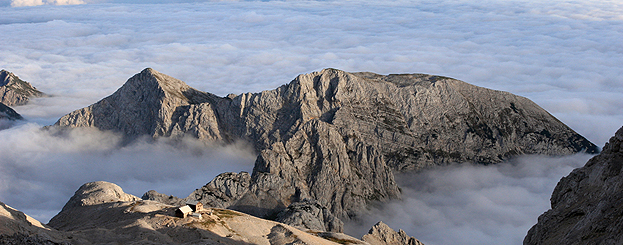
VISIT THE NEW TBCSG YOUTUBE CHANNEL https://www.youtube.com/channel/UCngSNLDn_iucw87xtQHQ43w
! If the above link is not clickable, copy and paste it into the address bar of your web browser !
By Olivier Chassot
Landscape ecology is an emerging paradigm and a developing discipline that acknowledges the need to manage mosaics of habitat in an integrative, integral and practical way at the wider landscape level. It is particularly useful in the context of transboundary conservation as it offers fundamental tools and concepts that are relevant for the study and management of complex landscapes including a vast array of intact or fragmented ecosystems.
A landscape approach allows a better ecosystem integrity and stability within transboundary protected areas or transboundary conservation initiative while recognizing the intrinsic importance of the human being within the landscape. It requires the identification and protection of ecological processes associated with ecosystems and focal species. In this sense, a functional conservation area is a geographical realm in which species, ecosystems and ecological processes are maintained as part of their natural range of variability. Some fundamental characteristics are the size, configuration and other parameters related to species, ecosystems and processes, the maintenance of patterns and biotic and abiotic processes on the long term and within their natural range of variability, as well as the acknowledgement of the human factor as an influence on the functionality of transboundary conservation areas.
The maintenance of landscape connections, where animals, plants, and ecological processes, including the human being, can move freely from one habitat to another, is an essential part of any conservation plan. In practice however, and in a transboundary setting especially, maintaining, creating, and protecting connectivity in an increasingly fragmented world is a challenge. Connectivity conservation practitioners, decision makers and other stakeholders involved in transboundary conservation recognize that effective large-landscape conservation needs the inclusion and cooperation of people. Connectivity conservation approach helps planning conservation at the functional or at the integrated landscape scale by maximizing the quality of existing habitat, by increasing habitat through protected areas establishment or management, by minimizing the impacts of land use in the matrix, and by promoting the connectivity of natural habitats to address the effects of isolation. Another important benefit of connectivity conservation is adapting to climate change by linking landscapes and allowing ecological processes to take place in fragmented ecosystems. Today, the growing trend in connectivity conservation and transboundary conservation initiatives provides a much better context for identifying large-scale naturally interconnected areas as critical strategic and adaptive responses to climate change. Working conservation at the landscape level through an ecosystem approach provides a set of tools that allows planners and stakeholders to work together in order to make conservation efforts more effective.
Ecological challenges and difficulty of gathering ecological data on Transboundary Conservation Areas (TBCA)
By Jamie McCallum
Increased connectivity across borders can also lead to increased ecological threats. Invasive species, particularly feral dogs, cats and livestock can disrupt the ecological balance of a formerly fenced protected area. These species can also act as vectors for pathogens, which could negatively impact conservation efforts. In addition open borders can lead to increased levels of poaching and smuggling and this activity is just as likely to take place in the core areas as at the edge of a complex.
The ecological advantages of TBCAs have been exposed to limited scientific scrutiny. Even the most widely published TBCA studies do not have a predominantly ecological focus, but rather look at ecology as just a part of the politico-economic model of TBCA. In part this is due to the large spatial and temporal scales that such projects cover. It is also due to the fact that direct comparisons are hard to make. A TBCA cannot exist at the same time in the same place as a non-TBCA site. Different conservation objectives in each TBCA can also add a layer of complexity to any analysis of benefit.
References:
AHEAD-GLTFCA Working Group. 2008. The Great Limpopo transfrontier conservation area and a proposed conceptual framework for progress. GLTFCA Newsletter.
Busch, J. 2007, Gains from configuration: the transboundary protected area as a conservation tool. Ecological Economics 67, 394-404.
Duffy, R. 2007, Peace Parks and Global Politics: The Paradoxes and Challenges of Global Governance. Peace Parks: Conservation and Conflict Resolution, S.H. Ali, ed. MIT Press, Cambridge, Massachusetts.
Sandwith, T., Shine, C., Hamilton, L., Sheppard, D. (ed Phillips A.) 2001. Transboundary Protected Areas for Peace and Co-operation. IUCN, Gland, Switzerland.
Ramutsindela, M. 2007. Transfrontier Conservation in Africa. At the confluence of capital, politics and nature. University of Capetown. SA.
Wolmer, W. 2003. Transboundary conservation: The politics of ecological integrity in the Great Limpopo Transfrontier Park. Journal of Southern African Studies, 29(1): 261–278.







